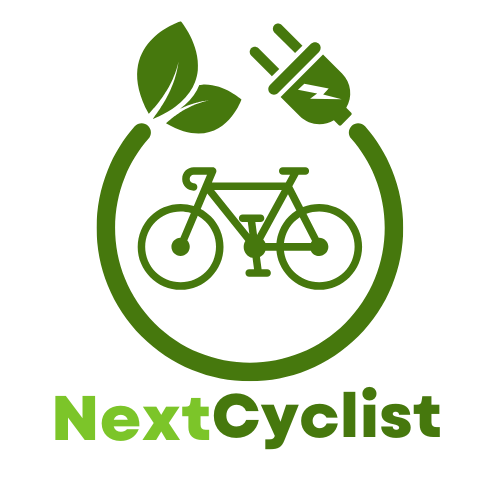A 48V 1200W system can generate a maximum speed of 20 mph (miles per hour) when paired with a bike or electric vehicle. This speed depends on several factors but generally indicates efficient performance for commuting or recreational use. For optimal results, ensure proper maintenance of the vehicle.
Introduction
Have you ever wondered how fast is 48V 1200W? If you own an e-bike, understanding its top speed is essential for making the most of your rides. After all, whether you’re zipping through city streets or enjoying a leisurely ride with your kids, knowing what your electric bike can do affects your experience. Frustratingly, many riders have no idea what to expect from their setup, leading to disappointment on the road.
But don’t worry—we’re here to clear up the confusion. In this article, we’ll break down the factors that influence e-bike speed and what you can realistically achieve with a 48V 1200W motor. From terrain and rider weight to battery capacity, these elements all play a crucial role in performance.
By the end, you’ll have a clear understanding of what speeds to expect and how to optimize your e-bike for the best ride possible. Ready to hit the road with confidence? Let’s get started!
TL;DR
- A 48V 1200W e-bike typically reaches 28 to 35 mph.
- Motor power increases torque, leading to quicker acceleration.
- Rider weight impacts top speed; lighter riders achieve higher speeds more easily.
- Aerodynamics matter; leaning forward reduces drag for better speed.
- Battery health is crucial; maintain charge levels for optimal performance.
- Tire pressure affects speed; keep tires properly inflated to reduce drag.
- Weather conditions, like wind, can slow you down; aim for calm days and wear snug clothing to minimize resistance.
Understanding Motor Power and Speed
A 48V 1200W e-bike can reach impressive speeds, typically between 28 to 35 mph. But how you get there depends on several factors, including motor power, rider weight, and aerodynamics. Let’s break it down to understand how these elements contribute to achieving maximum speed.
- Motor power translates into torque: The higher the wattage, the more torque your e-bike can produce. Torque directly affects your acceleration. So, a 1200W motor provides ample grunt to propel you swiftly off the mark when you hit the pedal. This means you can expect quicker take-offs compared to lower-powered electric bikes.
- Rider weight matters: If you or your cargo is on the heavier side, it takes additional power for your e-bike to reach its top speed. For instance, lighter riders often find it easier to achieve those 35 mph ratings because the motor doesn’t have to work as hard.
- Aerodynamics play a role: The way you ride can influence your e-bike speed too. If you’re riding upright with a lot of wind resistance, it may slow you down. Leaning forward while riding reduces drag, which can help you maximize that top speed.
In addition to the above, incorporating regular maintenance, such as checking tire pressure, can directly affect performance. Keeping your tires at optimal pressure ensures better grip and rolling efficiency, making it easier to maintain higher speeds. For tips on this, check out our e-bike tire pressure calculator.
Key Points Summary
| Factor | Impact on Speed |
|---|---|
| Motor Power | Increases torque, improving acceleration. |
| Rider Weight | Affects how much power is needed to reach top speed. |
| Aerodynamics | Reduces drag, allowing for better speed. |
Understanding these aspects can empower you to make adjustments to your riding style and maintain your e-bike effectively. With a little effort, you can optimize your ride for better performance and enjoy the thrill of faster speeds!
Factors Affecting Speed in E-bikes
When considering how fast a 48V 1200W e-bike can go, several important factors can make a noticeable difference in performance. Understanding these elements can help you enhance your riding experience and achieve the top speeds you desire.
Battery Condition and Charge Levels
The condition of your e-bike’s battery plays a crucial role in its performance. A well-maintained battery, ideally fully charged, can provide consistent power and efficiency. Here’s how to ensure you’re getting the best from your battery:
- Regularly check charge levels: Make it a habit to check if your battery is fully charged before a ride. A low charge can limit your e-bike’s speed.
- Clean contacts: Ensure the battery and its connections are clean and free of corrosion. This promotes better conductivity and power delivery.
Tire Pressure and Type
Your e-bike’s tire pressure and type can significantly influence how fast it can go. Properly inflated tires reduce rolling resistance, allowing you to zip along with less effort. Consider these tips:
- Check tire pressure often: Aim for the recommended pressure listed on the tire sidewall. Low pressure slows you down.
- Choose the right tires: Opt for tires designed for faster riding if speed is your priority. Slick tires typically offer less resistance than knobby ones.
Weather Conditions
Weather-related factors, particularly wind resistance, can also impact your e-bike’s speed. Here’s how to mitigate these effects:
- Plan rides wisely: If possible, choose calm days for your outings to avoid battling strong winds.
- Wear appropriate clothing: Dressing in tight-fitting clothing can help reduce wind drag, enabling you to maintain higher speeds.
By keeping these factors in mind, you can maximize your e-bike’s speed and enjoy a smoother, faster ride. Happy cycling!
| Factor | Impact on Speed | Best Practice |
|---|---|---|
| Battery Condition | Low battery may limit speed | Keep fully charged and well-maintained |
| Tire Pressure | Low pressure increases drag | Regularly check and inflate tires |
| Weather Conditions | Wind resistance affects speed | Choose calm days for riding |
| To wrap it up, understanding how fast a 48V 1200W e-bike can go is essential for getting the most out of your rides. You’ve learned that factors like motor power, rider weight, and even tire pressure play a significant role in achieving those impressive speeds, typically ranging from 28 to 35 mph. By applying the tips outlined in this article—like keeping your battery charged and your tires properly inflated—you’ll be well on your way to optimizing your ride. |
Now, don’t just sit there! Test your knowledge with a quick quiz below, and then hit the road with your e-bike. If you found this information helpful, subscribe to our newsletter for more maintenance tips, or share your experiences with us in the comments. Let’s boost those speeds and enjoy the ride together!
Quick Self-Assessment Quiz
- What factors can influence the speed of a 48V 1200W e-bike?
- Why is maintaining tire pressure important for achieving higher speeds?
- What is the typical speed range you can expect from this type of e-bike?
- How can rider weight impact e-bike speed?
Feel free to jot down your answers and see how you did!

